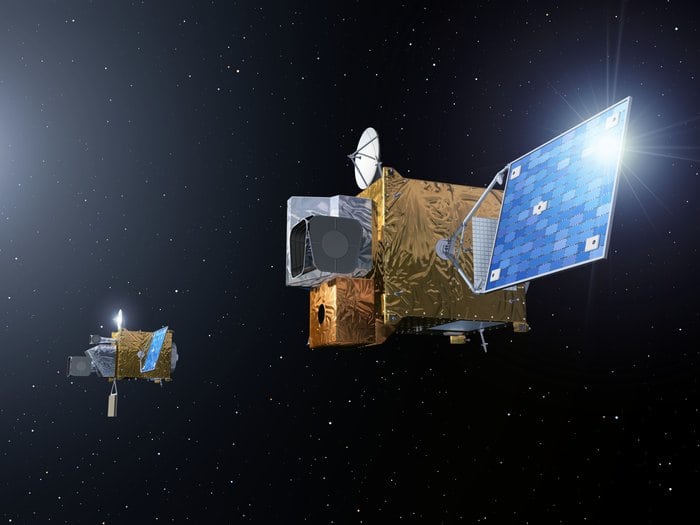Teledyne Delivers Space-Grade Processors to Thales Alenia Space

Meteosat Third Generation (MTG) imager and sounder satellites. Photo: ESA.
Teledyne has enabled Thales Alenia Space to gain a 10-fold increase in the processing speed and power for its On-Board Computers (OBC), with the design and qualification process cut by up to four years, according to the company. Teledyne e2v’s re-engineered PC7448 microprocessors will be used at the heart of Thales Alenia Space’s OBC that serve the Lightning Imager (LI) systems on Eumetsat’s Meteosat Geostationary Orbit (GEO) meteorological satellites.
Thales Alenia Space will equip four Meteosat MTG 1 satellites, scheduled for launch from 2019, with LI systems that will place a major demand on their OBCs to deliver the sensitivity and discrimination required for near real-time lightning detection over the Earth’s full hemisphere. Teledyne e2v has helped Thales Alenia Space meet this challenge by re-engineering commercial grade PC7448 1.3 GHz processors in accordance with NASA’s MIL-PRF-38535 Class Y (QML Y) quality standard. Now, according to the company, Thales Alenia Space can use a microprocessor offering the same performance as the latest desktop PCs in a spaceflight-ready version capable of surviving the rigors of a 15-year mission.
The satellite LI systems will facilitate the monitoring and tracking of active convective areas and storm life cycles critical for nowcasting and very short range forecasting of severe weather events. Monitoring of lightning also helps assess the impact of climate change on thunderstorm activity.